Biographies Lady Augusta Gregory

(Lady Isabella Augusta Gregory, née Persse )
Born 14/15 March 1852, County Galway, Ireland
Died 22 May 1932, Coole Park, Ireland
Irish folklorist, author, playwright, cofounder of the Abbey Theatre
170. birthday 15 March 2022
Biography • Literature & Sources
Biography
We believe we have elevated the dignity of Ireland. We have shown the world, who knew it not, that the old culture of Ireland had not died, but was still with us.
Lady Augusta Gregory, 1912
Not so long ago in Ireland, Irish culture – including the Irish (Gaelic) language – was scorned by the Anglo-Irish ruling class, known as the Ascendancy. The prevailing attitude was that Irish should be spoken only by “peasants,” or country people. Interest in Ireland’s ancient traditions of myths and sagas was strongly disparaged by professors at Dublin’s Trinity College. But all this began to change toward the end of the nineteenth century. Lady Augusta Gregory, herself a member of the Ascendancy, was – ironically – one of the primary agents of that change, helping to revitalize Irish culture and bring its literature and drama to world acclaim.
When she wrote the words quoted above, Augusta Gregory was referring in part to her work in establishing a national theater in Ireland, the famed Abbey Theatre in Dublin. But she contributed in other important ways as well, although until quite recently, her work was often overshadowed by that of men. Augusta’s achievements derived not just from her organizational and managerial abilities, but also her determination, her sense of diplomacy, her linguistic skills, her prowess in translating and writing prose and plays. Fundamental too were her love for the Irish people and her devotion to honoring their ancient traditions, to “bringing back the soul of Ireland to herself.”
Early Years and Marriage
Lady Gregory was born Isabella Augusta Persse in Roxborough, County Galway, in western Ireland in 1852 at midnight between March 14 and March 15, the Ides of March. She later said she wondered if this timing were auspicious. She was born into a family of the Protestant Anglo-Irish gentry on a 6,000 acre estate and was educated at home. The ninth of thirteen children, Augusta was reportedly closest to her four younger brothers, a situation that may have contributed to her independent spirit – although at the same time she also absorbed some of the prevailing ethos that as a female, her lot in life would be to serve others. Despite her high social standing, she was drawn to the country people who lived in her area and to their customs and stories. When she was a child, her nanny, Mary Sheridan, a Catholic and a native Irish speaker, told her old legends of Irish heroes and history; these would affect Augusta deeply when she grew older.
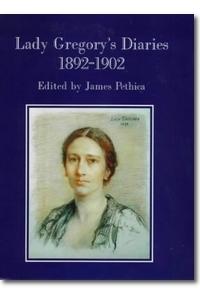 In 1880 Augusta married William Henry Gregory, a wealthy widower thirty-five years her senior. Gregory, a former member of Parliament in Ireland, had recently retired from the governorship of Ceylon (now Sri Lanka) – then a British colony – and had received a knighthood for his services. A member of the Ascendancy, he had inherited a large estate, Coole Park, near the town of Gort in County Galway. In marrying William, Augusta joined his eminent social and intellectual circles, leaving behind the role of spinster daughter in her own family.
In 1880 Augusta married William Henry Gregory, a wealthy widower thirty-five years her senior. Gregory, a former member of Parliament in Ireland, had recently retired from the governorship of Ceylon (now Sri Lanka) – then a British colony – and had received a knighthood for his services. A member of the Ascendancy, he had inherited a large estate, Coole Park, near the town of Gort in County Galway. In marrying William, Augusta joined his eminent social and intellectual circles, leaving behind the role of spinster daughter in her own family.
After their marriage the Gregorys spent little time at Coole, staying there for a few months in the late summer and early autumn (the hunting season). During the rest of the year they resided in London, where Augusta met many of the leading literary celebrities of the day, including Robert Browning, Henry James, and Alfred Lord Tennyson. They also traveled extensively to Europe and the Middle East and India. Their only child, William Robert Gregory (known as Robert), was born in 1881.
Although Augusta’s family held British colonial attitudes towards Ireland (the “unionist” stance), as a young woman she gradually came to support the nationalist cause of an independent Ireland. During a stay in Egypt – then under Turkish rule – in the winter of 1881/1882, she and William became friendly with a rebellious military officer, Arabi Bey, who protested strongly against Turkish rule and worked for Egyptian independence. The Gregorys – particularly Augusta – were in agreement with Arabi’s efforts. Clearly she saw a parallel between Egypt’s situation and that of Ireland, although she was not yet fully committed to Irish nationalism.
After several months of declining health, William died of respiratory failure in 1892. Newly widowed, Augusta began to spend more time at Coole, where she devoted herself to editing and writing projects. Besides writing numerous articles – including one sympathetic to Arabi Bey – she edited William’s autobiography. Later she edited his grandfather’s letters and, influenced by his thinking, began to question her own Ascendancy views on Irish politics. In 1893 she wrote an article opposing Home Rule (independence) for Ireland, but gradually changed her mind and, in a subsequent article, wrote in support of it.
Although she lived mostly alone at Coole, Augusta Gregory still wanted to maintain the social interactions she had enjoyed while William was alive, and went to London frequently to meet with old friends and acquaintances. After the customary two and a half year period of mourning, she continued to wear black nearly all the time, for the rest of her life – possibly to signal that she was not looking for a second husband. Some likened her appearance to that of Queen Victoria.
Irish Literary Revival
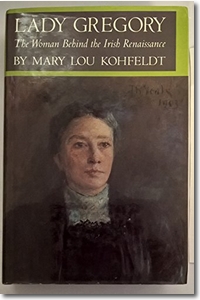 For centuries, the Irish culture and language had been increasingly marginalized by the English. During the years of the great Famine, 1845-1851, the native Irish culture was even more eclipsed as wealthy members of the Ascendancy took over land vacated by those who had died or who had emigrated because of disease or the threat of starvation. The Irish language was not taught in schools. But toward the end of the nineteenth century there was a flowering of interest in Irish culture and history, including the Irish language. Two major figures in what is known as the Irish Literary Revival were the celebrated Irish poet and mystic William Butler Yeats, and the scholar and future president of Ireland Douglas Hyde, both of whom were keenly interested in Irish folklore. In 1893, Yeats, who would later become Augusta Gregory’s close friend and literary collaborator, published The Celtic Twilight, a collection of supernatural tales he had gathered in his native county, Sligo. After reading this book, Gregory commented that she was “jealous for Galway.” In the same year, Hyde – who had earlier published a collection of folklore in Irish, Beside the Fire – with two others founded the Gaelic League to encourage the preservation of the Irish language and Irish music and dances. Also in 1893 Hyde published The Love Songs of Connacht, poems that he had collected and translated from the Irish. Lady Gregory was inspired by these works – as was Yeats – to become part of the literary revival.
For centuries, the Irish culture and language had been increasingly marginalized by the English. During the years of the great Famine, 1845-1851, the native Irish culture was even more eclipsed as wealthy members of the Ascendancy took over land vacated by those who had died or who had emigrated because of disease or the threat of starvation. The Irish language was not taught in schools. But toward the end of the nineteenth century there was a flowering of interest in Irish culture and history, including the Irish language. Two major figures in what is known as the Irish Literary Revival were the celebrated Irish poet and mystic William Butler Yeats, and the scholar and future president of Ireland Douglas Hyde, both of whom were keenly interested in Irish folklore. In 1893, Yeats, who would later become Augusta Gregory’s close friend and literary collaborator, published The Celtic Twilight, a collection of supernatural tales he had gathered in his native county, Sligo. After reading this book, Gregory commented that she was “jealous for Galway.” In the same year, Hyde – who had earlier published a collection of folklore in Irish, Beside the Fire – with two others founded the Gaelic League to encourage the preservation of the Irish language and Irish music and dances. Also in 1893 Hyde published The Love Songs of Connacht, poems that he had collected and translated from the Irish. Lady Gregory was inspired by these works – as was Yeats – to become part of the literary revival.
Collecting Folklore and Learning Irish
In the years following William’s death, Augusta too became interested in Irish folklore. In October 1893, in an unusual undertaking for an Ascendancy woman at the time, she traveled alone to Inisheer, one of three islands called the Aran Islands a few miles offshore in Galway Bay. While there she was stranded by a storm for several days among people who spoke primarily Irish and whose link with the old Irish culture was still intact. Realizing that there were people with similar backgrounds living nearer her home, she later recalled, “I was becoming conscious of a world close to me that I had been ignorant of. It was not now in the corners of newspapers I looked for poetic emotion, nor even to the singers in the streets. It was among farmers and potato diggers and old men in workhouses and beggars at my own door that I found what was beyond these and yet farther beyond that drawingroom poet of my childhood in the expression of love, and grief, and the pain of parting, that are the disclosure of the individual soul.” (The Kiltartan Books, p. 20, quoted in Coxhead, p. 42) She had known the local people all her life, but as an outsider who lived in the “Big House.” Now she began visiting local country people and listening to their stories, finally publishing her collection in 1920 in her book Visions and Beliefs in the West of Ireland. Included are tales of being “away” with the fairies; fairy forts; harbingers of death (such as banshees); magical healers; sightings of deceased people returning from death (such as mothers returning to see if their children are being treated well); and much more – myths and symbols that reflect concerns and comfort relating to “love, and grief, and the pain of parting.” For instance:
there was [a] woman I knew of died, and left a family, …And her husband married a serving girl after that, and she was hard to the children, and one night the [dead] woman came back to her, and had like to throw her out of the window in her nightdress, till she gave a promise to treat the children well, and she was afraid not to treat them well after that. (Visions and Beliefs, p. 199)
Later, when she came to write plays, Gregory often drew on folklore for characters and stories. While collecting folklore, she made every effort to gather the tales just as the speakers told them to her, honing her memory for that purpose so as to avoid distracting or intimidating them by writing their words down as they spoke. In part for this reason, the folklorist Henry Glassie has called her “one of the first great modern folklorists.” (McDiarmid and Waters, p. xxv) She gave some details about her method:
I began to enquire sincerely and with a desire to know and knowledge came to my hand…. I began filling a copy book with what I heard. These copy books have grown through the years. I have them in different colours according to the difference of the content (brown for visions, terra cotta for history and legend). I may say what the requisites are for any [who might be] thinking of beginning the work, endless patience, some leisure and a good memory. I have cultivated my memory to be as it were phonographic for such things as visions and beliefs and legends. I have done this at the cost of sacrificing other things. I forget names and dates and the multiplication table and all useful things. (From an unpublished lecture, “The Continuity of Folklore,” undated, quoted in Maureen Murphy, “Lady Gregory, ‘The Book of the People,’” Colby Quarterly 27 (1), March 1991, article 7, pp. 40-47) (cited in Hill, p. 198) (online at https://digitalcommons.colby.edu/cgi/viewcontent.cgi?article=2818&context=cq)
A major source of inspiration for Augusta Gregory’s interest in folklore was her learning, from Hyde’s works, about the Irish poet and fiddler Anthony Raftery, who had died in 1835. Raftery was born in County Mayo and was blinded by smallpox as a child. 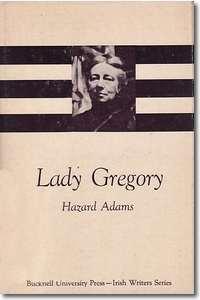 Very poor, he became a wandering bard; even decades after his death, many people were familiar with his poems and songs. Because Irish history was not taught in the schools, children often learned it from Raftery. Hyde found a manuscript of some of his poems in the Royal Irish Academy, and he also found the house where Raftery was born. Augusta, talking with some local people who had known Raftery, found his grave. Impressed by his life and his works, Augusta felt through him a connection with Ireland’s creative past. She wrote an article about him and included some of his works in her first book, Poets and Dreamers: Studies and Translations from the Irish, published in 1902. She arranged for a stone to be erected on his grave, inscribed with the single word “Rafterei” – just as the poet Homer was known by a single name. She also helped establish an annual feis (festival) in honor of Raftery.
Very poor, he became a wandering bard; even decades after his death, many people were familiar with his poems and songs. Because Irish history was not taught in the schools, children often learned it from Raftery. Hyde found a manuscript of some of his poems in the Royal Irish Academy, and he also found the house where Raftery was born. Augusta, talking with some local people who had known Raftery, found his grave. Impressed by his life and his works, Augusta felt through him a connection with Ireland’s creative past. She wrote an article about him and included some of his works in her first book, Poets and Dreamers: Studies and Translations from the Irish, published in 1902. She arranged for a stone to be erected on his grave, inscribed with the single word “Rafterei” – just as the poet Homer was known by a single name. She also helped establish an annual feis (festival) in honor of Raftery.
Augusta Gregory was also determined to learn the Irish language. She tried several times to do so. Initially she was not very successful, although she arranged for lessons to be given at Coole. But when in 1897 her son Robert expressed the same interest, they began to study the language together, turning to local native speakers for help. Augusta became proficient in reading and translating the language, but somewhat less so in speaking and understanding it. When she went out to interview native Irish speakers and collect their folklore – sometimes accompanied by Yeats – she often took someone else along too, who knew the language well enough to interpret, if necessary.
Translating Old Irish Myths and Sagas
Ireland has a rich tradition of myths and sagas dating from antiquity. They fall roughly into four cycles, called mythological, Ulster, Fenian, and historical. Handed down in oral tradition, they existed in manuscripts written by monks in old Irish from as long ago as the seventh century. In 1900, a publisher suggested to Yeats that he translate some of this material into English. Yeats replied that he didn’t have time, but he passed the project along to Gregory, who agreed to take it on. She later recalled, “when I went looking for the stories in the old writings, I found that the Irish in them is too hard for any person to read that has not made a long study of it.” (Coxhead, p. 57) Numerous earlier authors had made English translations from the old Irish, but their English tended to be rather stilted. Instead, she used a type of English that she called “Kiltartanese” (after hearing people speak it who lived in a nearby civic parish). Also known as “Hiberno-English,” this was an English dialect that retained the distinctive syntax, idioms, and rhythms of the original Irish. Like Hyde, Gregory had noticed that many of her Irish-speaking interviewees spoke English as if they were mentally translating directly from their native Irish, and she was led to use this as a model. The result was a more naturally sounding English than existing translations, which added to their appeal and made them quite popular.
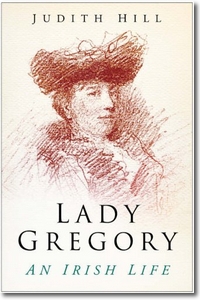 Lady Gregory dedicated one of these two works “to the people of Kiltartan.” She described the Kiltartanese dialect as “plain and simple words, in the same way my old nurse used to be telling me stories from the Irish long ago, and I a child at Roxborough.” (Lady Gregory, Complete Irish Mythology, pp. 329-330) The first of these was Cuchulain of Muirthemne (1902), which tells of the deeds of the great hero of Ulster. The second, Gods and Fighting Men (1904), concerns the coming of the Tuatha De Danaan, the people of the goddess Danu – a race of god-like beings said to have invaded and ruled Ireland in the remote past – as well as the later hero tales of Finn MacCumhail, a powerful leader and hunter-warrior of Irish legend.
Lady Gregory dedicated one of these two works “to the people of Kiltartan.” She described the Kiltartanese dialect as “plain and simple words, in the same way my old nurse used to be telling me stories from the Irish long ago, and I a child at Roxborough.” (Lady Gregory, Complete Irish Mythology, pp. 329-330) The first of these was Cuchulain of Muirthemne (1902), which tells of the deeds of the great hero of Ulster. The second, Gods and Fighting Men (1904), concerns the coming of the Tuatha De Danaan, the people of the goddess Danu – a race of god-like beings said to have invaded and ruled Ireland in the remote past – as well as the later hero tales of Finn MacCumhail, a powerful leader and hunter-warrior of Irish legend.
Skeptical at first, Yeats and others were surprised by the success of Gregory’s translations. Yeats commented, referring to Cuchulain of Muirthemne, “I think this is the best book that has come out of Ireland in my time.” (From the Preface to Lady Gregory, Complete Irish Mythology, p. 331) A close friend remarked, “She did for the old Irish sagas what Malory did for the Knights of the Round Table, and fairly won the right to be known as the Irish Malory.” (John Quinn in Mikhail, p. 81) Admirers of her translations included Theodore Roosevelt and Mark Twain. One biographer noted, “The epics gave the Irish people a great feeling of pride in themselves. Long accustomed to feel subordinate and inferior to England, they were surprised, they felt emboldened, to discover that Ireland had a heroic culture while England was still in the Dark Ages.” (Kohfeldt, p. 150) Augusta herself commented, “[One] of my objects – the one nearest my heart – is the making of the soil of Ireland sacred by getting legends known. By translating a legend, or some piece of folklore, we may give to the hills and the fields a new meaning, a new colour, a new inspiration for those who make their homes among them – thus, as I say, bringing back the soul of Ireland to herself.” (Saddlemyer and Smythe, p. 309)
Establishing and Managing Theaters
Among Lady Gregory’s best known contributions to the Irish cultural revival were her efforts to establish and maintain the Abbey Theatre in Dublin, which is still active today. Although in her younger years she was not much interested in theater, later – partly through her friendship with Yeats – she came to see drama as a means of reviving Irish culture. Gregory first met Yeats casually in 1894. Two years later they met again at the home of Edward Martyn, a wealthy neighbor who shared their interests in Ireland’s literary revival. Gregory and Yeats had a long, deeply productive relationship. That fall she invited Yeats to Coole; he spent the next twenty summers there, finding the peace and quiet he needed in order to write, with Lady Gregory as a sympathetic literary friend and sometime collaborator.
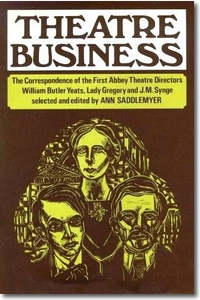 From 1897 on, Coole became a center of the literary revival, with many writers meeting there to draw inspiration from each other and exchange ideas. In 1897 Gregory, Yeats, and Martyn began discussing plans for a national theater in Ireland where they would produce Irish and Celtic plays. They drew up a prospectus: “We propose to have performed in Dublin in the spring of every year certain Celtic and Irish plays, which whatever their degree of excellence will be written with a high ambition, and so build up a Celtic and Irish school of dramatic literature….We will show that Ireland is not the home of buffoonery and of easy sentiment, as it has been represented, but the home of an ancient idealism. We are confident of the support of all Irish people, who are weary of misrepresentation, in carrying out a work that is outside all the political questions that divide us.” (Lady Gregory, Our Irish Theatre, p. 20) They founded the Irish Literary Theatre. With Lady Gregory’s help they raised some money, and the first performances took place in Dublin in May 1899; they went on to have a second season the following year.
From 1897 on, Coole became a center of the literary revival, with many writers meeting there to draw inspiration from each other and exchange ideas. In 1897 Gregory, Yeats, and Martyn began discussing plans for a national theater in Ireland where they would produce Irish and Celtic plays. They drew up a prospectus: “We propose to have performed in Dublin in the spring of every year certain Celtic and Irish plays, which whatever their degree of excellence will be written with a high ambition, and so build up a Celtic and Irish school of dramatic literature….We will show that Ireland is not the home of buffoonery and of easy sentiment, as it has been represented, but the home of an ancient idealism. We are confident of the support of all Irish people, who are weary of misrepresentation, in carrying out a work that is outside all the political questions that divide us.” (Lady Gregory, Our Irish Theatre, p. 20) They founded the Irish Literary Theatre. With Lady Gregory’s help they raised some money, and the first performances took place in Dublin in May 1899; they went on to have a second season the following year.
Three years later, two brothers, William and Frank Fay, who had some experience with amateur dramatics in Dublin, formed W.G. Fay’s Irish National Dramatic Company and encouraged Irish actors to participate. Finances were a problem, but a wealthy English woman, Annie Horniman, who had come to Dublin to work as a secretary to Yeats, offered to help. In 1903 Gregory, Yeats, and Martyn were joined by playwright John Millington Synge, who had spent time in the Aran Islands collecting folklore as she had and who had based some of his plays on it. Eventually the theater officially became the Abbey Theatre, with the curtain going up on opening night on December 27, 1904 with the plays Spreading the News by Lady Gregory, and On Baile’s Strand by Yeats. Gregory became intimately involved with the theater and its fortunes, taking on multiple tasks – including that of director – until her retirement in 1928.
The Abbey Theatre had its ups and downs over the years. The Irish uprising in 1916 and the first world war caused interruptions. There was often a lack of funding, although starting in the 1920s, works by playwright Sean O’Casey were very popular and helped offset these. One of Synge’s plays, The Playboy of the Western World, which concerned patricide, led to riots and a major scandal due to its theme and to language that some found offensive. Gregory, who disliked the play, nevertheless defended it. There was further disruption in 1911 when she, on her first of four American tours, took the Abbey company there. They performed Playboy, again leading to riots in some cities, especially New York. But some audiences were enthusiastic, and the tour was a financial success. Gregory and Yeats gave the theater to the Irish Free State in 1924, which officially accepted it the following year and granted it an annual government subsidy. The theater was destroyed by fire in 1951, but finally reopened in 1961.
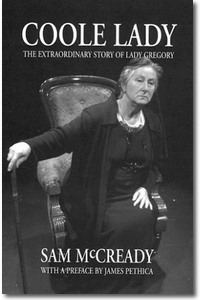 When Gregory arrived in Boston at the beginning of her first American tour, local newspapers took note. The Sunday Herald published a glimpse of her energy, devotion, and spirit in matters relating to the Abbey, in its description of Gregory in action: “Imagine a grandmother leaving behind a christening cake for her latest granddaughter, dashing across Ireland in an automobile from Galway to Queenstown [now Dun Laoghaire] through night and fog because the railroad men seize an opportune season to strike, catching an ocean liner after many mishaps, with little or no time to spare; rattling off on the keys of a typewriter the rough draft of a play in mid-ocean, and arriving smiling and unperturbed to face a score of photographers and interviewers – imagine all that, and there’s Lady Gregory.” (Mikhail, Lady Gregory: Interviews and Recollections, p. 41)
When Gregory arrived in Boston at the beginning of her first American tour, local newspapers took note. The Sunday Herald published a glimpse of her energy, devotion, and spirit in matters relating to the Abbey, in its description of Gregory in action: “Imagine a grandmother leaving behind a christening cake for her latest granddaughter, dashing across Ireland in an automobile from Galway to Queenstown [now Dun Laoghaire] through night and fog because the railroad men seize an opportune season to strike, catching an ocean liner after many mishaps, with little or no time to spare; rattling off on the keys of a typewriter the rough draft of a play in mid-ocean, and arriving smiling and unperturbed to face a score of photographers and interviewers – imagine all that, and there’s Lady Gregory.” (Mikhail, Lady Gregory: Interviews and Recollections, p. 41)
For all the popularity of Augusta Gregory’s plays in the early decades of the twentieth century, they were gradually performed less frequently. But the efforts she had made to build up the Abbey Theatre kept it going and continued to be appreciated by many. In 2002, the 150th anniversary of Gregory’s birth, one of her biographers deplored the fact that the Abbey had done nothing to celebrate the occasion. He quoted a tribute made by the Irish dramatist, poet and drama producer and director Lennox Robinson after her death: “We can rightly praise Synge and O'Casey and many another fine Irish playwright; talk of the genius of this player and that, but without Lady Gregory's doggedness and determination and belief in the Theatre, these people might never have, artistically, existed. Our Theatre would not be open today save for her. Lady Gregory was – is – the Abbey Theatre.” (Colm Toíbín, quoted in The Irish Times, “The Abbey Should Not Forget Lady Gregory,” March 11, 2002)
Writing Plays
Besides writing articles, translating sagas and myths, establishing and managing theaters, and helping other playwrights with their “country dialog,” Augusta Gregory realized that she herself had a knack for writing plays. She began doing so when she was fifty. Over the next two and a half decades she wrote more than nineteen plays, including comedies, tragedies, historical plays, religious plays, and plays for children. One of her first was Kathleen Ni Houlihan, which she wrote in collaboration with Yeats. This play became one of her most popular, and one that did much to gain support for the cause of Irish independence. The play began with a vision that Yeats had had. He imagined a domestic scene – a country family sitting in their cottage, chatting casually about the coming marriage of Michael, the son of the house. Into this setting steps a mysterious old woman in a long coat, who speaks poetically of a lofty cause far more important than personal happiness. In the end Michael is so inspired by her words that he forgets his marriage and his fiancée and follows the old woman out the door, totally committed to her cause. The play ends with an exchange between two other characters which implies that the mysterious woman is Ireland, and her cause is to abandon all others to fight for her, to the death if need be. Peter asks, “Did you see an old woman going down the path?” Patrick replies, “I did not, but I saw a young girl, and she had the walk of a queen.”
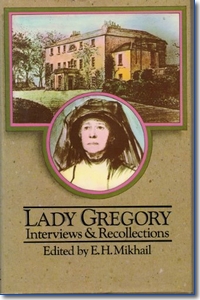 Kathleen Ni Houlihan was first performed in 1902 in the Fay brothers’ company, with Maud Gonne, the beautiful political rebel with whom Yeats was for many years hopelessly in love, in the role of Kathleen. It was a sensation. Until quite recently, Yeats was given sole credit for the play – and he did write the poetic passages spoken by Kathleen. But he was at a loss to write convincing country dialog for the other actors, whereas Gregory was well able to do so. Yet she was more than willing to have only Yeats’s name appear as the play’s author. Again, this may reflect a submissive tendency held over from her childhood. One author has recalled her saying later that she was “reluctant to deprive Yeats ‘from any part of what had proved, after all, his one popular success.’” (Colm Toíbín, quoted in The Irish Times, “The Abbey Should Not Forget Lady Gregory,” March 11, 2002) In 1919, when she was 67, Lady Gregory herself played the part of Kathleen in three performances of the play at the Abbey Theatre when the actress Máire Nic Shiubhlaigh was indisposed.
Kathleen Ni Houlihan was first performed in 1902 in the Fay brothers’ company, with Maud Gonne, the beautiful political rebel with whom Yeats was for many years hopelessly in love, in the role of Kathleen. It was a sensation. Until quite recently, Yeats was given sole credit for the play – and he did write the poetic passages spoken by Kathleen. But he was at a loss to write convincing country dialog for the other actors, whereas Gregory was well able to do so. Yet she was more than willing to have only Yeats’s name appear as the play’s author. Again, this may reflect a submissive tendency held over from her childhood. One author has recalled her saying later that she was “reluctant to deprive Yeats ‘from any part of what had proved, after all, his one popular success.’” (Colm Toíbín, quoted in The Irish Times, “The Abbey Should Not Forget Lady Gregory,” March 11, 2002) In 1919, when she was 67, Lady Gregory herself played the part of Kathleen in three performances of the play at the Abbey Theatre when the actress Máire Nic Shiubhlaigh was indisposed.
Another of Gregory’s political plays in support of an independent Ireland is The Rising of the Moon, in which a police sergeant is on the lookout for an escaped revolutionary hero in disguise. The sergeant recognizes him and nearly turns him in. But when the rebel starts to sing an old ballad, “The Rising of the Moon,” in support of Ireland’s nationalist cause, the sergeant remembers the song from his own idealistic, pro-nationalist youth and begins to sing along, and ends up helping the rebel escape. As he leaves he says to the sergeant, “Well, good-night, comrade, and thank you. You did me a good turn tonight and I’m obliged to you. Maybe I’ll be able to do as much for you when the small rise up and the big fall down…when we all change places at the Rising (waves his hand and disappears) of the Moon.” This play was Augusta’s most popular play; it was performed over 200 times at the Abbey Theatre.
Augusta Gregory was particularly adept at writing comedies. Her one-act play, Spreading the News, was among the first performed at the Abbey Theatre in 1904 after the theatre officially opened. The whole play is based on a series of bizarre misunderstandings. After a country fair, Jack Smith leaves to go home, but he’s left his hayfork behind. So Bartley Fallon grabs it and runs after Smith to return it to him. Because one character is hard of hearing, and because the villagers love to gossip, everything becomes confused; the confusion grows, until finally Fallon is falsely accused of murdering Smith and of plotting to run off to America with Smith’s wife. Many in the audience found the play hilarious.
Gregory also wrote several tragedies, including the one-act play, The Gaol Gate. Most of the dialog is between two women conversing outside a prison – the wife and the mother of Denis Cahel, who have come to visit him where he is being held for murder. Two other suspects have been imprisoned as well. It turns out, however, that the other two have been released due to lack of evidence; and that Denis – who was innocent and knew they were guilty, but did not turn them in – has already been executed for the crime. The women are much grieved, but at the same time they are gratified to learn that Denis did not stoop to becoming an informer.
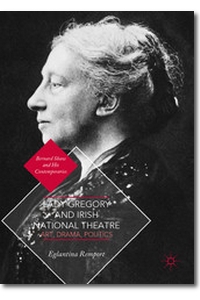 Although Augusta Gregory was certainly a strong woman in many ways, she was not explicitly a feminist in the usual sense, either in her life or in her dramatic writings. But her play Grania, written in 1912, is something of an exception. She took the story from the Fenian tale in which the aged and widowed Finn wishes to remarry, and chooses Grania as his new bride. Grania is on the point of accepting him when, catching sight of the handsome young Diarmuid, she falls in love with him. The young pair go off together; when they return to Finn’s court after many years – during seven of which they lived platonically – Diarmuid is filled with remorse, and it is clear that it is not Grania, but Finn, whom he loves most deeply, a love that Finn returns. Grania is furious; Diarmuid dies, and, in cynical spite, the self-assured, sensual Grania finally agrees to marry Finn, asking “why should I be a widow always that lived so long a maid?”
Although Augusta Gregory was certainly a strong woman in many ways, she was not explicitly a feminist in the usual sense, either in her life or in her dramatic writings. But her play Grania, written in 1912, is something of an exception. She took the story from the Fenian tale in which the aged and widowed Finn wishes to remarry, and chooses Grania as his new bride. Grania is on the point of accepting him when, catching sight of the handsome young Diarmuid, she falls in love with him. The young pair go off together; when they return to Finn’s court after many years – during seven of which they lived platonically – Diarmuid is filled with remorse, and it is clear that it is not Grania, but Finn, whom he loves most deeply, a love that Finn returns. Grania is furious; Diarmuid dies, and, in cynical spite, the self-assured, sensual Grania finally agrees to marry Finn, asking “why should I be a widow always that lived so long a maid?”
Comparing this play to another of her plays, Deirdre, also with a theme of doomed love but with a much weaker heroine, Gregory commented, “I think I turned to Grania because so many have written about the sad, lovely Deirdre, who when overtaken by sorrow made no good battle at the last. Grania had more power of will, and for good or evil twice took the shaping of her life into her hands.” (Saddlemyer and Smythe, p. 42) One of Gregory’s biographers wrote, “As I see it, Grania is not in the strict sense a love-story at all. It is a play in which a woman is ousted from an emotional relationship between two men. The ‘love’ is that of man for man, of brother for brother; it is loyalty to the warrior band, and a corresponding resentment of the woman who takes away the warrior’s freedom, makes trouble with his comrades, distracts him from his purposes in life.” (Coxhead, p. 137) It is worth noting that Grania was not performed during Gregory’s lifetime. It may have come too close to events or feelings in the playwright’s past, possibly a romantic extramarital relationship that she had when she was younger.
In an overview of the plays, another biographer noted, “Her short comedies are explosions of laughter. Her patriotic plays touch immediately a deep tribal identification with the Irish people united against an oppressor. All her plays provide a satisfying, touching demonstration of the power of the psyche to balance itself, to supply in one form the love and freedom denied in another.” (Kohfeldt, p. 7) The critic Hazard Adams wrote, “When Lady Gregory is mentioned as a playwright, it is most often her invention of the Kiltartan dialect drama that is remarked, but her plays are also characterized by the genius of their construction, her capacities for mythmaking, and her power therein to universalize the existence of the corner of the world that she made her subject.” (p. 44)
Documenting Political Troubles
Augusta Gregory also kept a diary. Between the years 1919 and 1923, when first the Irish War of Independence and then the Irish Civil War were raging, she wrote detailed accounts in her diary of some of the many atrocities that were occurring around her, which are valuable today for understanding what people lived through in those years. Coole was in danger from attacks; her nephew was murdered by the Irish Republican Army, and Margaret, her daughter-in-law, was nearly killed when the car she was riding in was ambushed. Coole itself escaped, but Roxborough was burned down in 1922.
Enduring Personal Tragedies
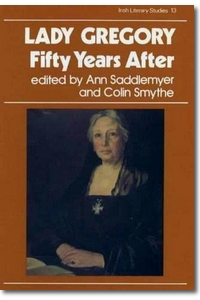 During her life Lady Gregory had her own share of tragedies and other difficulties, besides her husband’s death in 1892. Over the years, she lost several siblings and nephews. She also had three operations for breast cancer. In 1915, at the start of the first world war, her beloved nephew Hugh Lane, who was an avid collector of Impressionist art and the director of the National Gallery of Ireland in Dublin, died on the ship Lusitania when it was torpedoed. Gregory fought for many years to arrange for his collection of paintings to be housed in Dublin rather than London, but was not able to do so during her lifetime. Finally in 1959 a compromise was reached – the paintings would be exchanged between the two cities’ galleries every five years.
During her life Lady Gregory had her own share of tragedies and other difficulties, besides her husband’s death in 1892. Over the years, she lost several siblings and nephews. She also had three operations for breast cancer. In 1915, at the start of the first world war, her beloved nephew Hugh Lane, who was an avid collector of Impressionist art and the director of the National Gallery of Ireland in Dublin, died on the ship Lusitania when it was torpedoed. Gregory fought for many years to arrange for his collection of paintings to be housed in Dublin rather than London, but was not able to do so during her lifetime. Finally in 1959 a compromise was reached – the paintings would be exchanged between the two cities’ galleries every five years.
In 1918, Augusta Gregory’s son Robert, a sensitive, promising artist to whom she had always been close, died while fighting in the first world war when the plane he was piloting crashed. According to some sources, he was shot down by friendly fire, a fact that his mother was never told. Robert was married and the father of three small children, and his death had a devastating effect on Augusta. She transferred some of her affection for him to his son Richard, his oldest child. Robert’s two daughters, Anne and Catherine (nicknamed “Nu”), spent much of their childhood with their grandmother Augusta at Coole. Anne later wrote an engaging memoir about their various escapades during those years, titled Me and Nu: Childhood at Coole.
After Robert died, his widow Margaret became the owner of Coole, and she wanted to sell it. Coole was sold in 1927 to the Irish Land Commission, with a stipulation that Augusta would be allowed to rent it for a small sum as long as she lived. In 1931 she published an elegy for the house, titled Coole. She never felt the same strong affection for the house at Coole that she had for her childhood home at Roxborough, but she loved the “Seven Woods” at Coole and often became involved in maintaining and planting new trees. A visitor to Coole, while Augusta was showing her around the woods, recalled her noting, “Nearly all my book royalties grow into trees.” (Mikhail, p. 22)
Augusta Gregory died in 1932 after a third operation for breast cancer. The house at Coole was torn down in 1941, but Coole Park and the woods remain.
Leaving a Legacy
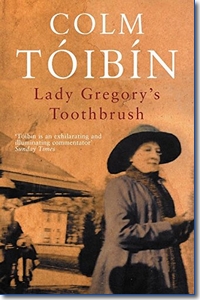 Lady Augusta Gregory wore numerous hats during her life, and left her mark in numerous areas. Born a member of the Protestant Ascendancy in Ireland, she took issue with some of its pro-English values as she got to know “how the other half lives” and strove to understand and bring to life, largely through drama, an aspect of Ireland and its creative expression that had been hidden in shadow for centuries. After she died, a critic was quoted in the Irish Times about her work for the Abbey Theatre: “She was inspirer, founder, dramatist and director, from the conception of the enterprise until her death, and throughout all that long period she nursed the theatre as probably no one ever will again.” (Coxhead, p. 200) Speaking more broadly of the Irish revival, another author commented, “If it had not captured her interest at the outset, the Irish literary revival – the germ of a movement which has become celebrated throughout the whole world – almost inevitably would have lost its Irish character within a very few years. She it was who ordained that the centre of the movement should become Dublin and not London.” (Coxhead, p. 200)
Lady Augusta Gregory wore numerous hats during her life, and left her mark in numerous areas. Born a member of the Protestant Ascendancy in Ireland, she took issue with some of its pro-English values as she got to know “how the other half lives” and strove to understand and bring to life, largely through drama, an aspect of Ireland and its creative expression that had been hidden in shadow for centuries. After she died, a critic was quoted in the Irish Times about her work for the Abbey Theatre: “She was inspirer, founder, dramatist and director, from the conception of the enterprise until her death, and throughout all that long period she nursed the theatre as probably no one ever will again.” (Coxhead, p. 200) Speaking more broadly of the Irish revival, another author commented, “If it had not captured her interest at the outset, the Irish literary revival – the germ of a movement which has become celebrated throughout the whole world – almost inevitably would have lost its Irish character within a very few years. She it was who ordained that the centre of the movement should become Dublin and not London.” (Coxhead, p. 200)
Taking a long view, looking back over Gregory’s life, drama scholar Una Ellis-Fermor wrote of her creativity: “Few men or women have had so rich a flowering so late in life and kept unsuspected by themselves or others, so rich a genius unused and yet unsoured. Truly she could say with Hans Andersen, ‘My life has been a wonderful fairy tale.’” (Kohfeldt, p. 7)
When she was near death, Augusta herself wrote in her diary, with characteristic modesty, “I know I have left a sheaf that contains its quota of golden grain; I have been but the reaper, the ripened ears came from the poor, the people; the sun that ripened the harvest comes from beyond the world, I can claim diligence, and love – for the work – for the people – for the Abbey – for Ireland – that ‘constraineth me’ to do such service as I may.” (Hill, p. 352)
Author: Dorian Brooks
Literature & Sources
Anne Gregory, Me and Nu: Childhood at Coole (Gerrards Cross, Buckinghamshire, UK: Colin Smythe Ltd., 1970)
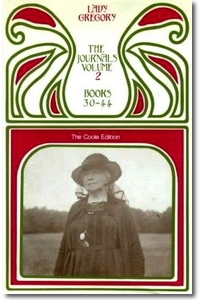 Lady Augusta Gregory, The Complete Irish Mythology (London: the Slaney Press, 1994). Preface by W.B. Yeats.
Lady Augusta Gregory, The Complete Irish Mythology (London: the Slaney Press, 1994). Preface by W.B. Yeats.
___________, Coole (New York: MacMillan, 1971)
___________, The Kiltartan Books, comprising The Kiltartan Poetry, History, and Wonder Books (New York: Oxford University Press, 1971)
___________, Our Irish Theatre: a Chapter of Autobiography (New York: Oxford University Press, 1972)
___________, Poets and Dreamers: Studies and Translations from the Irish (New York: Oxford University Press, 1974)
___________, Seventy Years: an Autobiography (New York: MacMillan Publishing Co., Inc.,1974)
___________, Visions and Beliefs in the West of Ireland (Gerrards Cross, Buckinghamshire, UK: Colin Smythe Ltd., 1992)
Hazard Adams, Lady Gregory (Lewisburg: Bucknell University Press, 1973)
Sandra Billington, “Augusta Gregory,” in Carmen Blacker and Hilda Ellis Davidson, eds., Women and Tradition: a Neglected Group of Folklorists (Durham, NC: Carolina Academic Press, 2000)
Elizabeth Coxhead, Lady Gregory: A Literary Portrait (London: Secker & Warburg, 1966)
Judith Hill, Lady Gregory: An Irish Life (Stroud, UK: Sutton Publishing Limited, 2005)
Mary Lou Kohfeldt, Lady Gregory: the Woman Behind the Irish Renaissance (New York: Atheneum, 1985)
Lucy McDiarmid and Maureen Waters, eds., Lady Gregory: Selected Writings (London: Penguin Books, 1995)
E. H. Mikhail, Lady Gregory: Interviews and Recollections (London and Basingstoke: The MacMillan Press LTD, 1977)
James Pethica, ed., Lady Gregory’s Diaries, 1892 – 1902 (Gerrards Cross, Buckinghamshire, UK: Colin Smythe Ltd., 1996)
Ann Saddlemyer, In Defence of Lady Gregory, Playwright (Dublin: the Dolmen Press Limited, 1966)
Ann Saddlemyer and Colin Smythe, eds., Lady Gregory: Fifty Years After (Gerrards Cross, Buckinghamshire, UK: Colin Smythe Ltd., 1987)
Colm Tóibín, Lady Gregory's Toothbrush (Madison, WI: University of Wisconsin Press, 2002)
William Butler Yeats, The Celtic Twilight (New York: Dover Publications Inc., 2011)
If you hold the rights to one or more of the images on this page and object to its/their appearance here, please contact Fembio.



